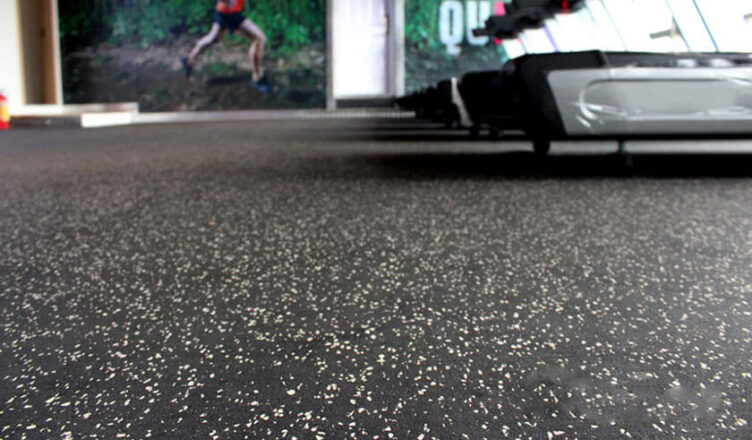In homes, rubber floor is often used in playrooms, gyms, laundry rooms, near kitchen sinks, and basements, where it is one of the safest flooring materials for families with children due to its water and slip resistance. Rubber flooring comes in pre-cut floor mats, interlocking tiles, or a roll, so you can get the job done without throwing the scraps in the bin.
One of the biggest advantages of rubber in home renovation is that if you use natural rubber without chemical additives, you can safely install it over your existing hardwood, laminate, or tile floors and temporarily turn any corner of your home into an exercise room, activity center, workshop or kindergarten. Thanks to the robust elasticity of the rubber, it dampens the sounds of dropped dumbbells, clicking heels, running pets, and noisy children.
Another benefit of rubber is that it is soft and gentle on the feet, knees, hips, and lower back, making it ideal for garages and workshops, and you have to stand on it to clean it, so maintenance is also a breeze. . Rubber floors should be vacuumed and mopped once a week with a damp mop and a mild detergent. It’s that easy! With such easy maintenance, it’s clear why the rubber is popular in large professional and medical facilities where safety is paramount.
It’s not all roses though. One of the potential disadvantages of rubber floors is their unusual and distinctive odor, which some homeowners find unpleasant. Fortunately, the smell only applies to newly installed floors and will dissipate over time. Bonding natural rubbers to synthetic rubbers will help because the chemical treatments used to make synthetic rubber intensify the smell. However, most homeowners will find that the safety, water resistance, sound insulation, reduced energy costs, ease of maintenance, and simple DIY installation of rubber flooring is worth a few days of (potentially) funky odors.
Sustainable and ecological
The whole world demanded sustainable products and services. Being a part of this change and contributing to a better place for your children and grandchildren can be a great example.
There are some products in the rubber flooring market that are made from recycled materials such as tires. The quality of these floors is very good and can give your playground an ecological status, which is an added value for your school or apartment.
But beware, not all recycled material can be placed on play area floors. There are materials on the market made with inappropriate waste, such as plastic and other waste, often mixed with rubber, so check what waste your supplier uses.
The durability of rubber flooring
A well-laid and maintained rubber floor can last up to 10 years. Some maintenance will always be required, however, if the material is of good quality and you follow the correct usage and cleaning instructions, you will only need to look after it for 4 years after installation.
Rubber floors made from waste tires and using the appropriate resins in the products tend to last longer. Another important tip is not to drag heavy materials across the floor, which can damage the surface of the boards. In addition, cleanliness is essential.
The story is the same for playgrounds and plays areas. If you don’t have good suppliers and don’t use the right materials, it can take a lot of life. Rubber floors are the ideal material for greater peace of mind when managing space, as they are easy to clean and require maintenance every 2 to 4 years.

